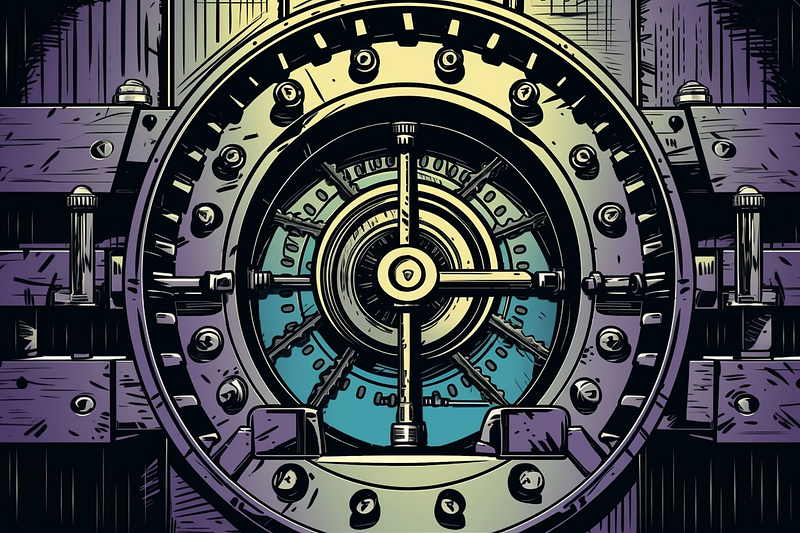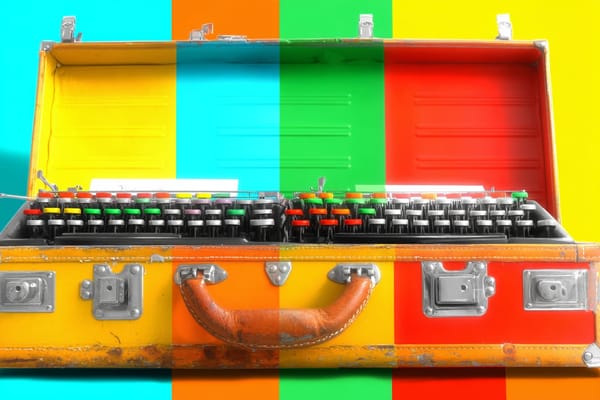What It Means to Trust the Banking System
Silicon Valley Bank, the financial industry, and how we move forward

When you’re driving, you have a reasonable assumption that other drivers will follow the rules.
There are laws (like the speed limit and obeying traffic lights) and guidance (maybe not the best idea to speed up to pass when traffic is heavy). Sometimes people break the laws. Sometimes people take risks. And sometimes there are innocent victims as a result.
I’ve been reflecting on the Silicon Valley Bank collapse since it happened. (If you need a detailed explainer, you can read this article). There has been a lot of finger-pointing.
There is no one thing that lead to SBV’s collapse. It was a combination of the bank’s unique clientele, a changing VC-backed tech landscape, rising interest rates, deregulation, and a bad press release. A perfect storm.
But a core concern should be the financial system in the United States. Like driving, it is built on trust. A series of laws, guidance, and relying on the fact that most people are trying to do the right thing most of the time.
If that trust shatters, the system will collapse. That’s been the biggest risk of the SVB failure.
The philosophy of money
German philosopher Georg Simmel is credited with codifying the idea of money as a sort of collective delusion.
In 1900 he published the book The Philosophy of Money and in it, he wrote, “An object does not gain a new quality if we call it valuable; it is valued because of the qualities it has.”
We accept that paper money has value because we collectively agree that it does. We accept that the balance displayed in our banking app is correct and available if we need to withdraw money.
That’s one of the reasons that the crypto market has struggled. There’s no collective acceptance that cryptocurrency has value. The colossal fallout of FTX, the bankruptcy filings of multiple exchanges, the massive devaluation of Bitcoin, and large layoffs at Coinbase have done little to help the cause.
The FDIC was created during the Great Depression, in part, to restore confidence in the U.S. banking system. Dozens of banks failed in “bank runs” where people collectively ran to withdraw cash. It doesn’t work that way… banks don’t keep money locked up in a safe.
The U.S. hadn’t seen a bank run since 2008. Wachovia lost about 1% of its deposits in a single day. Under pressure, Wachovia put itself up for sale. Earlier that same year, IndyMac lost 7.5% of its deposits over a few days and ultimately failed. By comparison, SVB lost 25% of its deposits in under 48 hours. People were clearly scared.
And because of the significant media attention, it made other people wonder: Is my money safe at my bank?
The tricky balance of banking regulations
My first job was as a bank teller at a community bank. Two branches, asset size of about $50 million (compared to SVB’s $200 billion).
Eventually, I began underwriting loans and working in loan operations. Then went to work at a fintech for 15 years. The product was a loan risk management system for community banks and credit unions. I firmly believe in the mission of these small yet mighty banks: to serve their communities.
Yet community banks are under enormous pressure. Technology demands are high and they don’t have the resources of their big bank counterparts. They don’t have the marketing budgets to promote themselves in the same way. And on top of that, they face the regulators.
Many laws require all banks to comply, regardless of size. They exist to protect consumers. But other regulations only apply to banks of a certain size.
Following the 2008 banking crisis, banks over $50 billion had to submit to additional regulatory requirements, as part of the Dodd-Frank act. Banks successfully lobbied Congress, and in 2018 it was raised to a threshold of $250 billion (for context: the CEO of SVB pushed hard for the change).
Taking Dodd-Frank out of the picture, I see two sides to the issue of regulation. Small banks don’t have the staff of big banks. So regulations that require a lot of data collection and analysis are simply hard. The bank I worked for had one compliance officer and it wasn’t his full-time job (he was also a loan officer).
Now, that little $50 million bank wasn’t ever subject to Dodd-Frank. But on the whole, regulatory pressures are one of the reasons that banks have consolidated over the years. If they merge with another bank, they get the benefit of more resources.
In the United States, we’re down to fewer than 5,000 unique banks. Back in 1993, thirty years ago, there were more than 10,000. In 1934 — the oldest date on record — there were more than 14,000. The number has decreased rapidly. Some failed during the 2008 financial crisis, but that’s a fraction of the total banks that have disappeared. Most are mergers and acquisitions.
All of this context is to set up the narrative that banking regulations are tricky. There’s a balance between “too much” — where a bank is literally crippled — and rolling back regulations to the point where bad things can happen.
Trust that banks are sound
The everyday person doesn’t really care about bank examiners (much as they make a bank sweat). We just trust that our banks are doing the right thing.
Banking regulators are the stoplights. There’s a Stop and a Go. And we assume that if there’s a problem, someone is rushing to fix the problem behind the scenes so that no one gets hurt and traffic isn’t backed up.
Banks will do whatever the regulators tell them. If the traffic light stops working, some banks will continue to follow the rules. And some will be that asshole that doesn’t wait their turn.
During the 2008 banking crisis, I worked with a bank that ultimately failed. The bank was taking massive, massive risks with its loans. Eventually, borrowers couldn’t pay those loans back.
I also know of another bank that failed. And — among many problems — one of the executives was committing wire fraud.
In both cases, examiners caught the problems. With the first bank, the examiners noted the problems for a long time and kept telling the bank to shape up (“stop speeding, you’re going to get in trouble”). With the second bank, the fraudulent activity was uncovered. Both of the banks were bought by other banks, and buyers were lined up in advance.
We trust that our banks make sound business decisions with the money they’re vested with safekeeping. And even though it isn’t something we actively think about, we trust that if there’s a problem, the regulators will find it and take care of it.
Trust that not everyone is greedy
SVB was home to many venture capitalists and many venture capital-backed companies. No question.
The narrative around this specific group of clientele has been really ugly. I read a comment from someone who griped about the backstop of SVB’s depositors versus the (seemingly failed) student loan cancellation plan. She wrote: “I would certainly hope the venture capitalists and tech companies who were the bulk of SVB’s base have a little more financial savvy than 17-year-old me did.”
The undertone is clear: that SVB was home to rich people and companies that didn’t need help.
Have I been angry at venture capital over the past few years? Absolutely. The tech industry has been ravaged by layoffs. Companies took tens, if not hundreds, of billions in venture capital, hired like crazy, and then laid people off en masse to cut costs.
But that’s not every venture capital-backed company.
VC companies take risks. Banks take risks also, but not in the same way. So for many companies, venture capital is the only viable option. And it’s a hard argument to make that these companies shouldn’t exist. BioNTech received $270 million of venture capital in 2018 and three years later gave us the Covid-19 vaccine. There’s climate tech. There’s healthcare tech. There are a lot of companies out there trying to do good but are deemed “too risky” for other types of funding.
And there’s another side to that world. I worked for a self-funded tech company that never spent more than it earned. That sounds great, in theory. But there reached a point where the company couldn’t compete because it couldn’t scale. So an otherwise good company started to flounder over time. Would a VC investment have changed the company’s trajectory? Sometimes I wonder.
There’s a lot to be said for setting aside the stereotype that “all venture capital is greedy” and recognizing that VC plays a part in some really good companies coming to life.
Trust that some people were victims
More than 90% of SVB’s deposits were above the $250k threshold for FDIC insurance. Companies were parking a lot of money in their accounts.
In reality, this is a common practice. I looked up my own bank (a regional bank, about one-eight of SVB’s size). More than one-third of my bank’s deposits are uninsured. There aren’t a lot of options for companies that need more than $250k to run their day-to-day operations.
Banks have to disclose that anything over $250k is not insured. They post signs in the lobby. It’s in your account disclosure. But do they actively encourage you to take your money elsewhere? No. Because the bank needs deposits in order to make loans (that’s how banks work).
In 2008, lots of people took out mortgages that they couldn’t afford. But the banks let them do this, telling them they were approved. Do you blame the borrower, if the bank said, “Hey, it’s not a problem — you got a loan!”
And do you blame the depositor, if the bank said, “No problem — we’re happy to take your money!”
The depositors were further victimized by some venture capitalists yelling, “FIRE!” in a crowded theater. And you can bet that those VC firms go their money out first, before advising their portfolio companies to do the same. Which makes it all the more likely that the depositors left behind included some small businesses.
Yes, there were the Roku-like account holders of SVB with $500 million. But out of 40,000 depositors, how many were small and mid-sized companies? We don’t know, because a government backstop prevented the fallout.
Trust that other people were spared
Bank failures usually result in a buyer. Often the buyer makes depositors whole. When IndyMac failed in 2008, uninsured depositors lost $270 million.
But SVB was unique in the sheer volume of uninsured deposits that were also concentrated in tech companies.
Would the depositors have gotten their money bank? We don’t know. I’ve suspected that the sale is harder than most because the type of clientele isn’t as appealing to a traditional bank. Other banks turned these customers away in the first place; that’s how they ended up at SVB. So we can’t say “most of the time the customers get their money back,” because that might not have been the case here.
And while the FDIC would have paid an advance dividend to cover some uninsured deposits, we don’t know how much that would have been. Companies were facing imminent payroll of their employees. One of my friends knew that her employer’s small business had all of its money at SVB.
We have to trust that the fallout could have been massive. Companies were on the phone with the regulators all weekend, panicked about their survival.
We’re not just talking about companies. We’re talking about people employed by those companies. Without knowing the potential for recovering deposits, we have to assume that some companies were spared from complete collapse and many, many people were spared from unemployment.
Trust that the panic was contained
Here’s the main reason that the systemic risk exception was invoked (protecting deposits over $250k): to prevent other bank failures.
Signature Bank failed the same weekend, for the same reason: a run on deposits. Without the emergency provision, every business owner in the U.S. could have woken up on Monday morning, wondering if their deposits were safe.
And that could have triggered additional bank runs and bank failures.
Maybe you think that doesn’t impact you, especially if you keep less than $250k in your account. Your money is fine. But back to the number of banks in the United States: that number has been shrinking.
Large businesses wouldn’t take their money to community or regional banks if they panicked. They’d turn to one of the Big 4 (JP Morgan Chase, Wells Fargo, Citi, and Bank of America) — banks with assets in the trillions that have been deemed “too big to fail.” The banking industry would be further squeezed.
First Republic Bank, a bank that caters to wealthy clients, is in trouble. Customers have been withdrawing en masse — the exact scenario that was predicted for banks across the country. The Big 4, plus Truist Bank, have infused First Republic Bank with $30 billion in cash, trying to help.
Think about it: banks helping each other. That’s because they recognize that the financial system that we all participate in is on shaky ground if there are more bank failures due to bank runs.
But, as of right now, it’s one bank and, hopefully, a bank that can be saved. The market stabilized and banks didn’t report mass withdrawals on the whole. However, First Republic Bank is an illustration of what could have easily happened across the country.
Without trust, “the system” will break down
One of my friends said, “I have a reasonable expectation that in 2023, the money in my bank account is mine.”
We all believe that. The depositors at SVB believed that.
You can think what you want about venture capital. And SVB’s management. And excess deposits. And banking regulations.
Some of the narrative lacks understanding about the nuances of this situation. People scream “bailout!” like the depositors have been placed on a hierarchy and weren't deserving enough.
None of that helps this situation. We have have to continue to believe in the financial system — the “collective delusion” we’ve all ascribed to.
Because, truly, the entire financial system is built on trust. That not all banks are engaging in risky activity. That most companies running businesses aren’t reckless. That most people can get a paycheck, no matter where their employer banks. That the government will provide proper checks and balances.
And that your bank will be there for you tomorrow.
If you want to support my work as a writer, you can buy me a coffee. You can also subscribe to my Substack for more thoughts on work culture and the future of work. Connect with me on LinkedIn or Threads.





